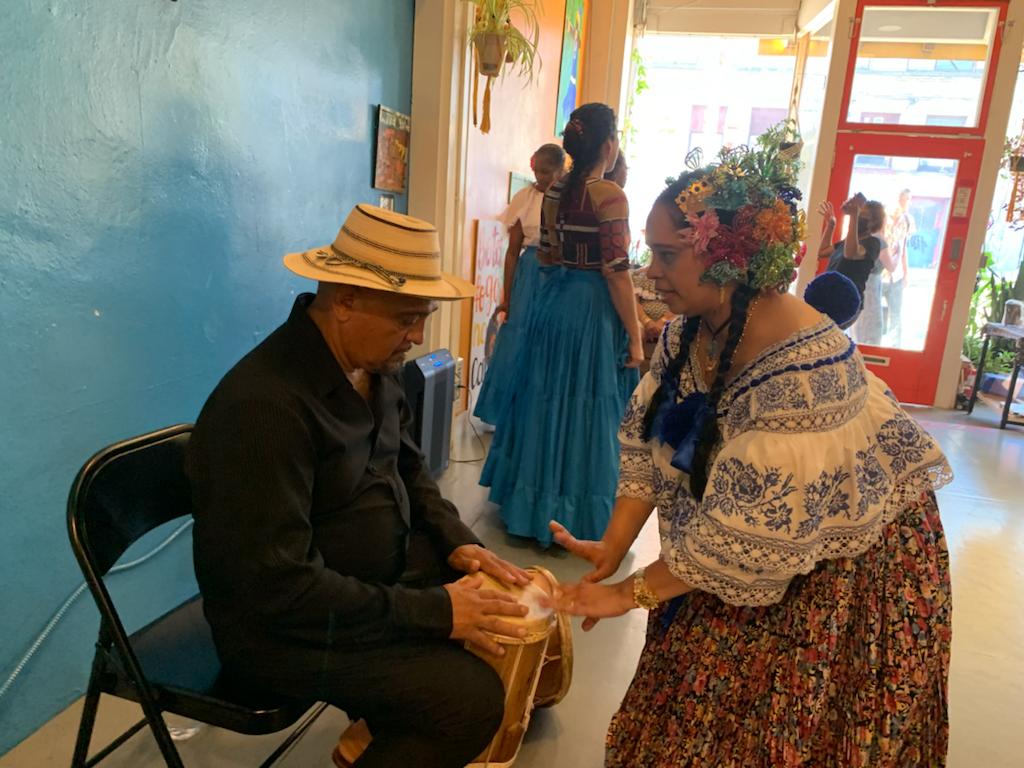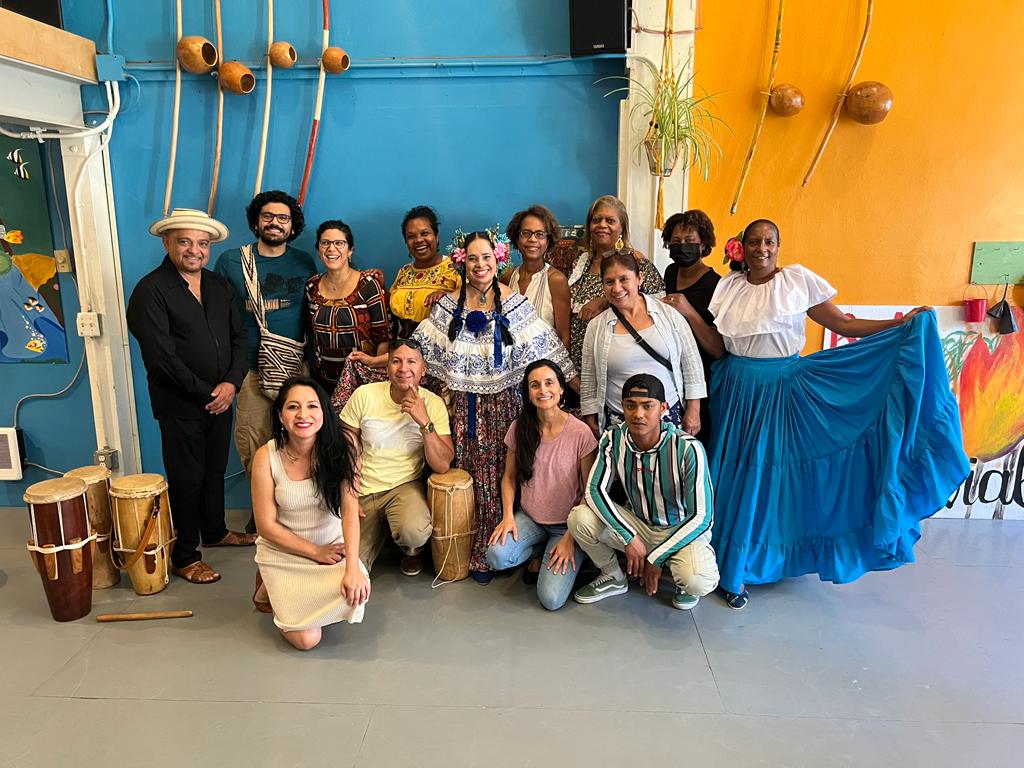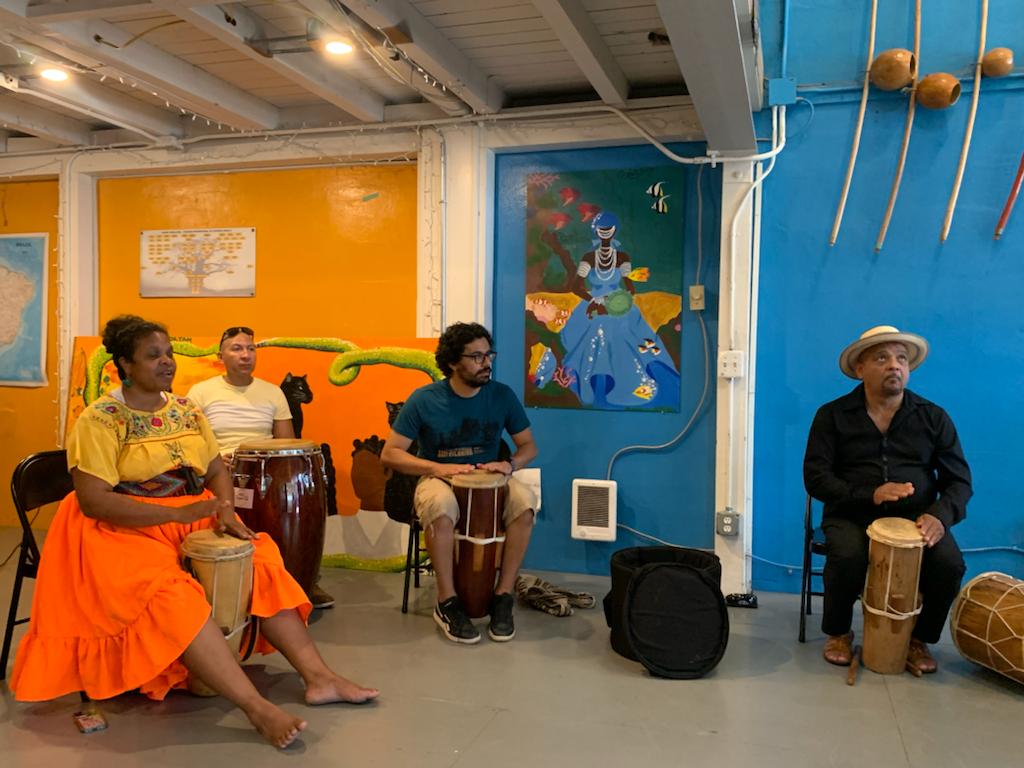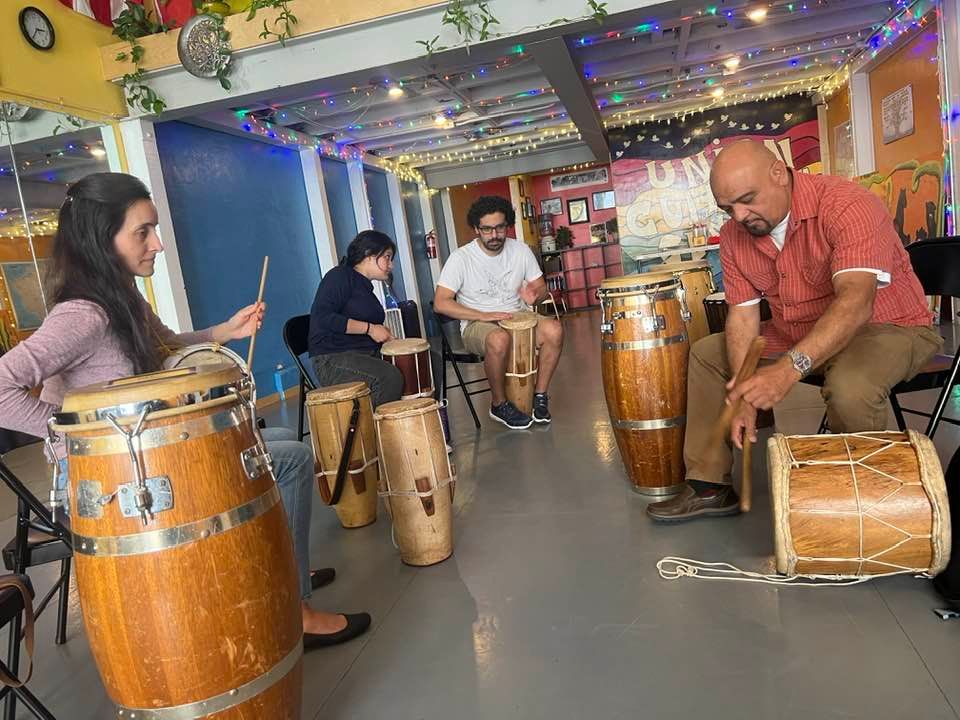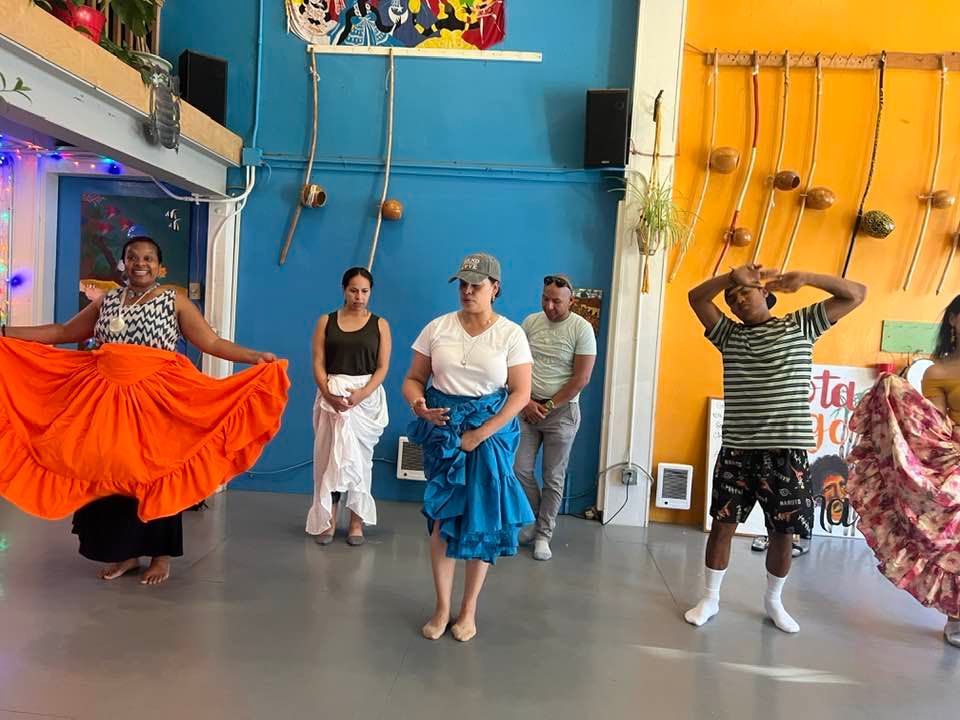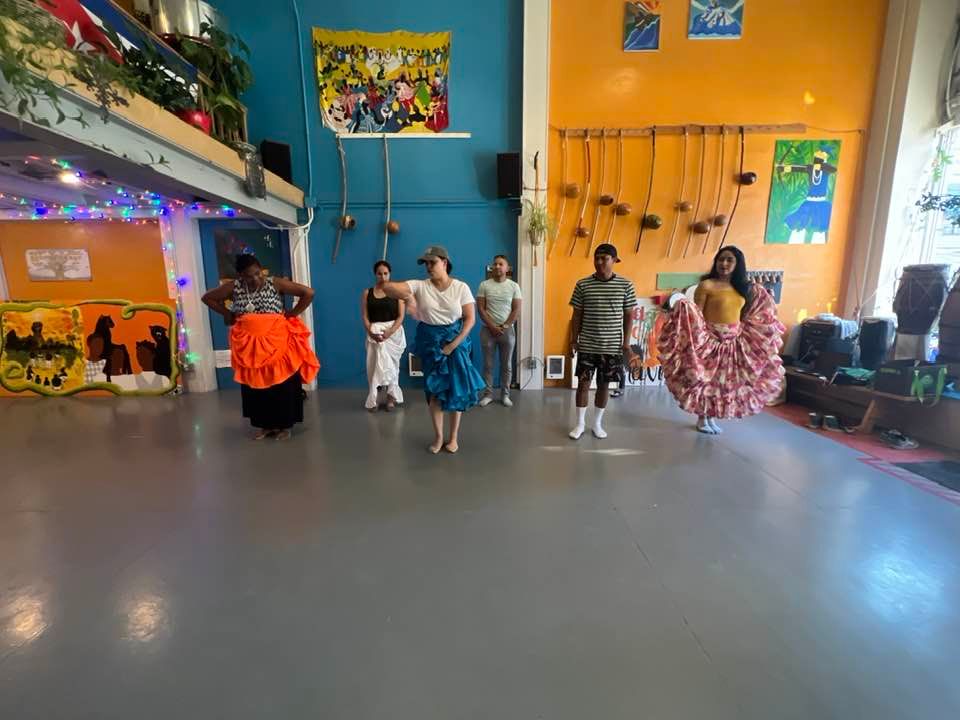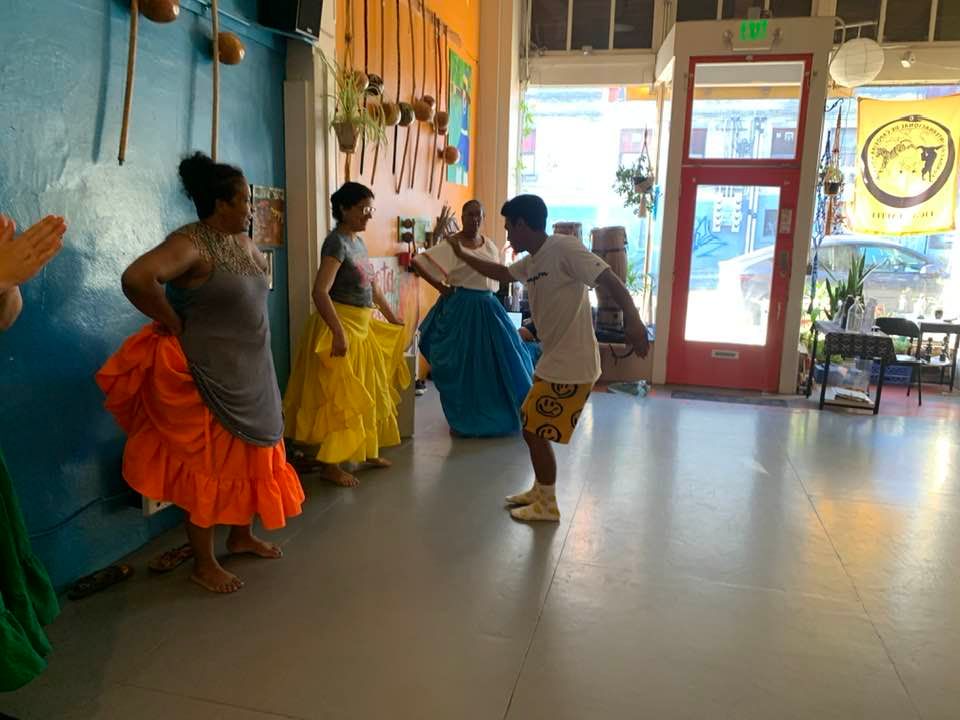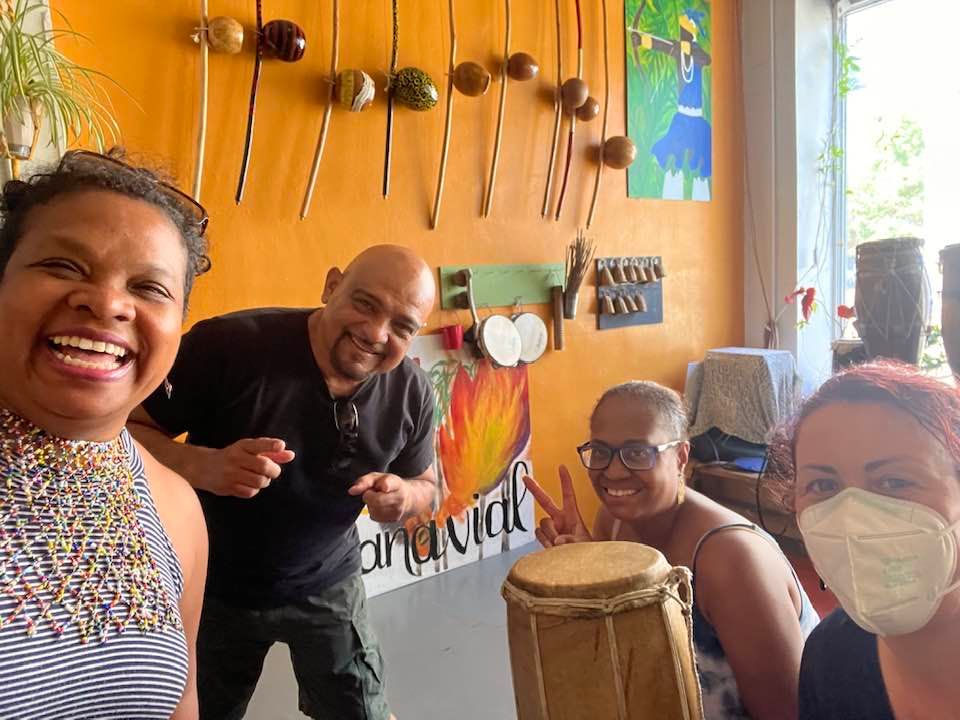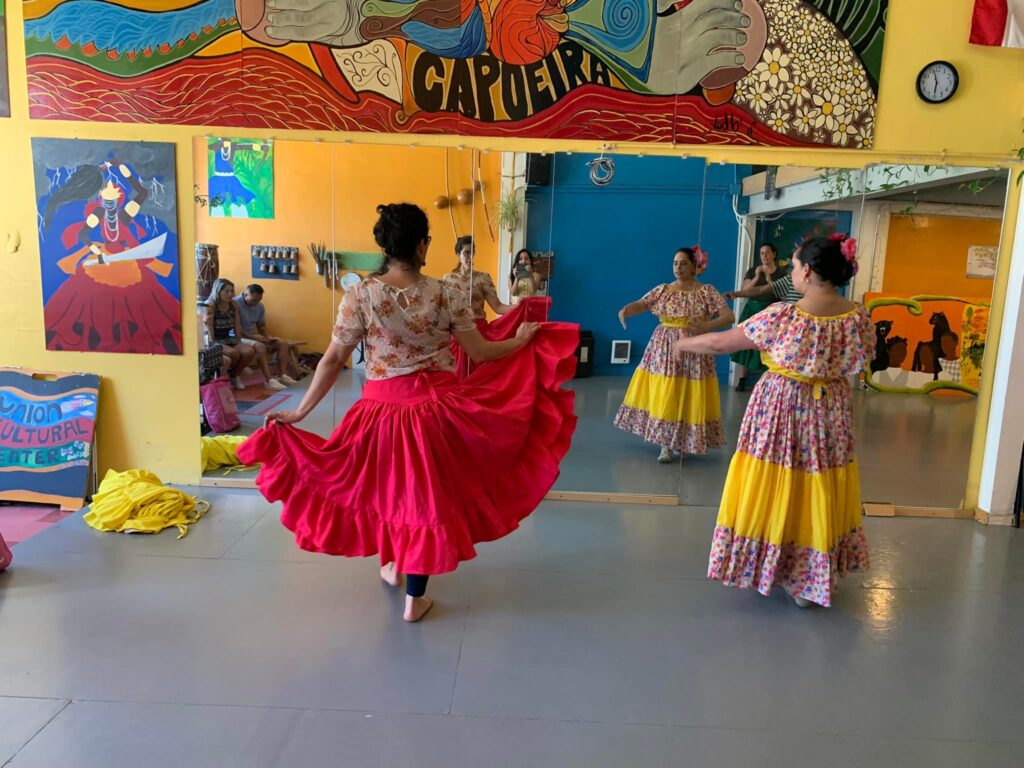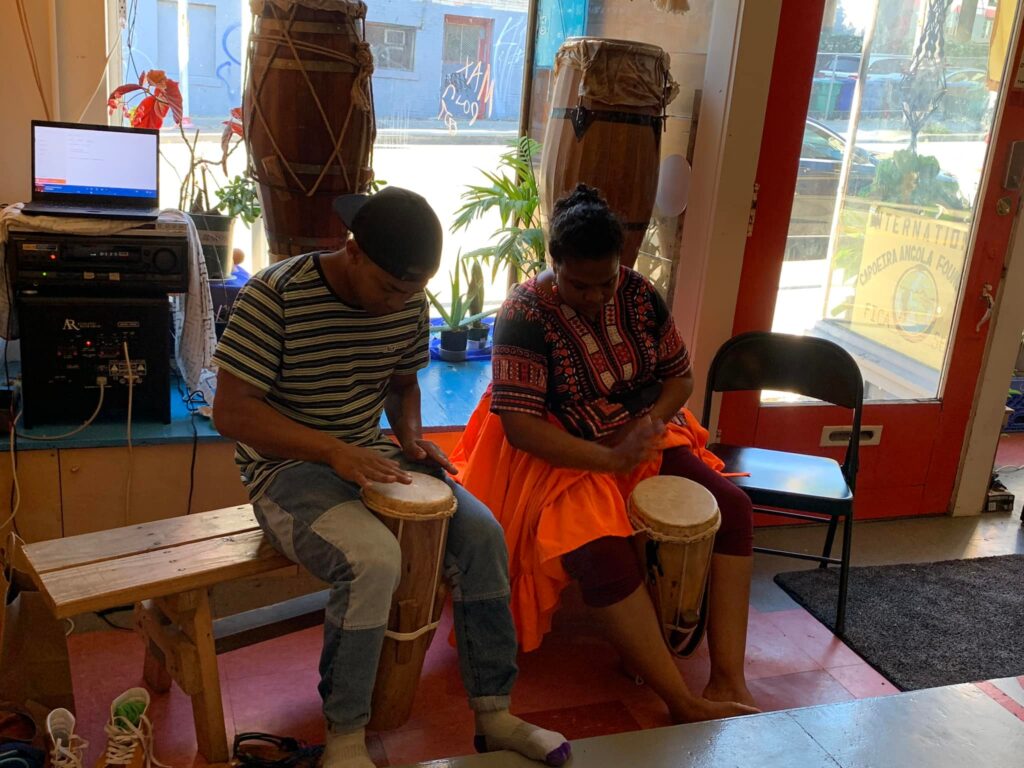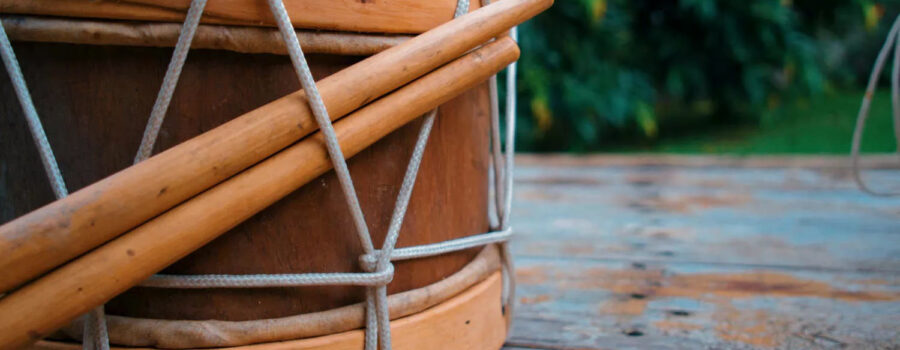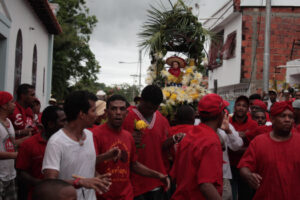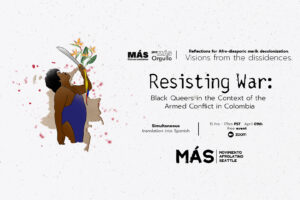The tamborito is the King dance and musical genre in the isthmus of Panama and is conventionally recognized as the most important expression of Panamanian folklore.
Tamborito is a derivative of mestizo dance and folk music, and the melody has its roots in the 17th century. This genre of folk music is a hybrid blend of Spanish, Amerindian and African cultures. Tamborito’s rhythm is African-influenced, the lyrics tend to be repetitive and, as in West African vocal music, also incorporate popular commentary. Panama’s most famous Tamborito was written in 1918 by Juan Pastor Peredes, musicalized by Carmen Lagnon, titled El tamborito de la alegría.
Musical composition of the Tamborito
The Tamborito is performed musically to the rhythm of the drums, the stomping of the feet, the clapping of the hands and the singing of harmonic poems, called coplas. Vocally, the Tamborito is led by a female singer, the cantalante, who sings about lust, frustration, and the sexual tension and attraction felt between men and women at the carnival. The spectators and the group of waiting performers, known as estribillio, respond to the cantalante’s singing by clapping twice in one measure and with the singing of the copla. The coplas are Spanish poems, which are sung lyrically and comprise four-line stanzas.
The percussion involved in the Tamborito consists of three drums in the center of the circle created by the estribillio. There are three drums, native to Panama, that are used in the interpretation of the Tamborito: the “Caja”, the “Repujador” and the “Repicador”. All these drums are made from the hollowing out of local, Panamanian trees, with the heads made of tanned cowhide.
What are the common instruments of Tamborito panameño?
- Snare Drum
- Puck Drum
- Snare drum
- Almirez
- Spanish guitar
- Violin.
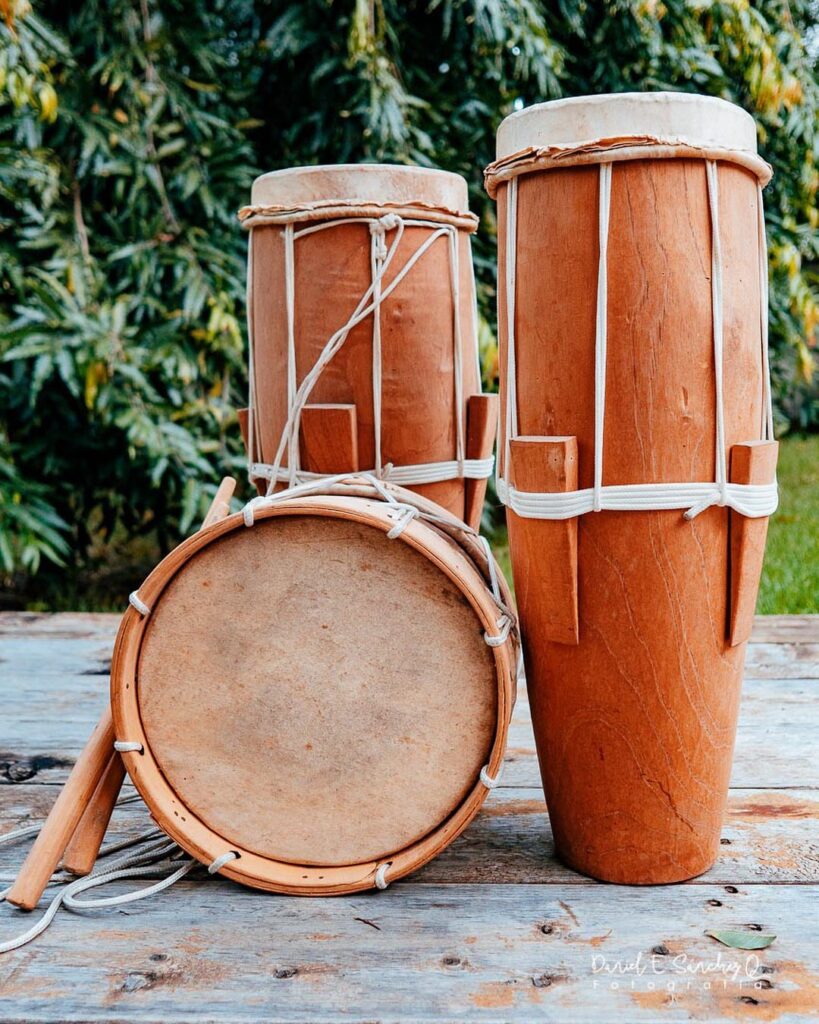
Types of Panamanian Tamboritos
- Tamborito Santeño
The couplets of the tamboritos of the province of Los Santos refer to their Spanish origin: they are tender in the requiebro, warm in love, impetuous in passion, sentimental in complaint, insulting in insult, harsh in oblivion, rebellious before the imposition, lovers of freedom, mocking spirit and accurate in criticism. On some occasions mention is made of animals such as: pigeons, herons among other birds and one or another species such as the snake, the iguana, and the loggerhead. He almost never uses the flora in his couplets, he only uses it as a backdrop.
- Tamborito Chiricano
The Province of Chiriquí cultivates the drum with melodies, rhythms, nomenclatures, choreography and own intention, this drum is cataloged as the fastest rhythm drum. It is a region with slaughter drums which are very scarce in the Republic. In their texts the dialogue between the singer and her choir predominates, they talk about their work, their work at sea and report on some important places in the country. They dominate the old drum to the north rhythm, the new drum to the corrido rhythm. In his texts the dialogue between the singer and her choir predominates, they also demand dramatization, and it is done during the dance.
- Drums of the region of Dos Ríos, Dolega
there are two modalities, the new drum; it is cheerful, the cantalante is accompanied by the palms of the women, and the old drum; where the palms are not used to applaud and the times of zapateo and retreat are longer than the new drum, it is calmer; it is known as the north drum. The instruments for its execution are the box, which guides the singer in her singing and toning, a chime, handles the dancer and if he has a good ear he listens to the call to shoe, finally a pujador, who serves as an accompanist or does the functions of bass or tonality of the cantalante.
- Drums of the region of Remedios
there are two modalities, the dramatized, with a north rhythm, is dramatized while dancing; among them, El Gavilan Caballero, Napoleon, Ajé Capitán and Los Camarones. The second modality is the non-dramatized, follows the rhythm of the old drum, without dramatizing while dancing; among them, La Iguanita and Ajé María Salomé.
- Tamborito Coclesano
The Tambores de Coclé, from the point of view of the folkloric literature of the tamborito, are the picaresque of the drum. A certain dose of lyricism can easily be noticed in his texts, which limits of course, all desolate crudeness. His texts reflect meditation, because he does not own the land he works, he writes texts with mockery towards life, to the slights, as well as to anxiety. They cultivate the North drum, soft in melodies. In Antón, next to the drums is the Almirez, a bronze glass that they sound with a small bar of the same metal and continuing to cultivate the style of Caja redoblante of Spanish descent that has fallen into disuse in the rest of the regions of the country.
- Tamborito Veragüense
El tamborito de la (Provincia de Veraguas), has a great poetic quality, its melodies combine joy with sadness at the same time. His songs and music contain a different meaning from the other provinces of our country.
In Veraguas we find the Bogas, drums that evoke the life of the voters in the river, among them we can mention: the Seña, Afuera de la Mar, Las Olas son de la Mar, Ajé yo soy Morena and soy Sirena.
Other topics that are treated in the texts of the Veragüenses drums are: strong criticisms of the customs of the place that denote struggle between the classes. Enthusiasm for the subject of politics, drums that name figures such as Rodolfo Chiari, Belisario Porras among others. Allusion to the traditional festivities of the country, where the calendar of the patron saint festivities is cited. Inclination towards lyrical texts, the scope of jealousy, impetuous passion, indirects envened by spite. The poetic evocation of the field. The old corners such as Calidonia, La Explanada and La Calzada.
- Tamborito Ocueño and Las Minas
Known as the drum of Order, extremely slow north rhythm has a walk between soft, between the north and the corrido (the one of Las Minas is usually a little faster). It is the romantic drum par excellence, where the man uses the resource of gallantry, elegance, and dancing ability to conquer the woman. It exhales love, and the beauty of the woman, which can have several pairs throughout the dance. The walk is made around the wheel, when you reach the front of the Drums two steps back are taken, making the body backwards. Then there is a turn and then a quick follow-up from the front, with the skirt open and the man in the center.
- Tamborito de Parita and Santa María
El Tambor Corrido is danced in Parita and Santa María, during its interpretation the couple remains in the center, it gives the impression that it is not dancing, but its execution is very soft and with a lot of Donaire and elegance. The ride is done around the wheel like the Ocueño drum and the Las Minas drum, with the only difference that when you reach the front of the drums you take three or four steps back and then continue with the dance. It is one of the most liked drums in the region.
- Tamborito of the province of Panama
The drum in this province has influence of the drum of other provinces, for example in San Carlos, Bejuco and Chame the drum that is practiced is in the Coclesan style, while in Chepo, Chimán and San Miguel the drum is practiced to the darienita. The Tambores Capitalinos, present an indefinite cultured flavor, their texts are from people of complete or almost complete education, so they do not keep that feeling of daily life, more than anything they are works created to satisfy a need in some show. They have spread very little, and if they reach the village, it sings them in the heat of events but then forgets them. The modalities of Tambor Norte, which is the soft drum, and the Tambor Corrido, which is faster, are danced. Its main figures in the execution of the dance are the walk and the seguidilla A Drum of the capital that has liked a lot is “Tambor de la Alegria” whose authorship is by Juan Pastor Paredes.
- Tambor Chorrerano
The Tambor Chorrerano is very different, it has not spread but has not suffered any excessive, it is unattractive for those who are not used to it. This Drum is slow and swampy, it is narrative there is in its couplets accent of mythology, it always captures the conversation above all, it is discreet because it tries not to make strong criticisms or harm to others. It differs from other ways because it uses 4 drums for the execution of its rhythmic melody.
- Drum with guitar from the island of San Miguel
In San Miguel, one of the most important islands of the Pearl Archipelago, they practice a tamborito that they call Tambor con Guitarra in which not only drums but also a Spanish guitar and a violin appear. It is a unique form of dance, with its own choreography, literary text, and exclusive melody, different in its execution from what they do when they dance the big drum or the boy, which correspond to our northern and corrido rhythms. By the way, it is this drum with guitar, one of the most beautiful variants of the Tamborito.
- Portobelo Drum
For Colonenses the expression drum dance refers to a group or genre of dances in which the accompaniment is done with a set of drums voices and female claps, invariably. In some modalities melodic instruments such as flute and guitar are regularly added. It is a dance for small groups and not for masses, it is performed during the 4 days of carnival in the Portobelo region. The drums that are played in Columbus are the drum of the Congo groups, the north drum, and the corrido drum.
MÁS promotes Afro-Panamanian Tamborito in Seattle
Between the months of July and August MÁS managed and promoted the workshops of Afro-Panamanian rhythms and dance focused on the Tamborito in Seattle (name the area of Seattle where they were), these had very talented facilitators and committed to preserving the cultural traits of the African diaspora in the territory. Alfredo Chavez composer, multi-instrumentalist and singer and Blanca Prater who promotes, celebrates and cultivates Panamanian traditions and customs in the Pacific Northwest; with them we were able to offer five sessions of music and dance respectively free of charge.
MÁS Workshops
MÁS Talleres
